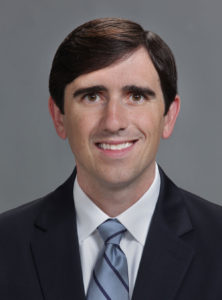Joint Preservation Surgeon

Are you suffering from shoulder osteoarthritis? If you are trying to delay a shoulder replacement and want relief, joint preservation or cartilage restoration surgery may be right for you. Shoulder joint preservation specialist, Dr. Robert Boykin provides diagnosis and both surgical and nonsurgical treatment options for patients in Asheville who are suffering from osteoarthritis and shoulder pain. Contact Dr. Boykin’s team today!
Shoulder Osteoarthritis
Injury to the articular cartilage of the shoulder (the lining on the end of bones that allows smooth motion) can cause significant pain, catching, and stiffness of the shoulder. This may be seen on a spectrum from a small injury on the surface of the cartilage, to a full thickness defect (an area of missing cartilage with exposed bone), to osteoarthritis with global degeneration and loss of the cartilage. In general, focal chondral defects (a specific area of cartilage injury without osteoarthritis) tend to occur in younger patients and may cause pain, grinding, and locking of the joint. Osteoarthritis is mostly seen in an older population with wear and tear, but it can also affect young, active individuals who have a previous traumatic injury (from sports or another accident). Osteoarthritis causes chronic pain, shoulder stiffness, and limited mobility for individuals and is caused by the wearing away of the majority of smooth cartilage surface to reveal the underlying bone. Shoulder surgeon, Dr. Boykin specializes in the treatment of shoulder osteoarthritis for patients in Asheville, Arden, Fletcher and surrounding North Carolina communities.
Treatment Options for Shoulder Cartilage Damage
The surgical treatment options for cartilage damage are based on the patient’s symptoms, type and extent of damage, age, and function. For smaller lesions that have fraying or partial thickness loss of cartilage, the preferred treatment is a shoulder arthroscopy, debridement, and chondroplasty (smoothing of the torn cartilage). This surgery is performed with small incisions, a camera, and specialized instrument to remove any loose pieces of cartilage and stabilize the area of damage to prevent an increase in size. This procedure has been shown to be successful in alleviating pain for these types of injuries. If a full thickness loss of cartilage is present (down to bone) with good surrounding cartilage, a technique known as microfracture is used to restore and regrow a cartilage tissue that is similar to articular cartilage. This technique, also known as marrow stimulation, involves making tiny holes in the bone to release marrow and healing elements into the area of cartilage loss. These fill the defect, form a blood clot, and eventually regrow tissue over the area of exposed bone. The procedure was first invented for cartilage in the knee, but new results have shown it to be a safe and effective procedure in the shoulder. In younger patients, if the area of cartilage loss is too large to be treated with microfracture, a resurfacing procedure using a cartilage graft from a donor is considered.
Joint Preservation Treatment Options
When the cartilage damage has progressed to osteoarthritis (involving both sides of the joint), the options for surgical treatment are more limited. In older patients, the procedure which provides the best results in terms of pain relief and improvement of function is a total shoulder replacement. In those who develop arthritis as a result of a long standing rotator cuff tear (called rotator cuff arthropathy) a reverse total shoulder replacement is the treatment of choice. Younger, active patients with osteoarthritis present a challenge in terms of surgical treatment. While a total shoulder replacement may offer improvement in pain and function, these have a limited lifespan therefore in most cases are not suited for younger patients. One option may be arthroscopic surgery to remove loose pieces of cartilage, treat the inflamed lining of the joint, smooth down any remaining cartilage, remove bone spurs, release the capsule to allow improved motion, and address any compression of the nerves around the shoulder. This procedure has been recently described with good short term results in delaying a total shoulder replacement, but the long term results are not yet known.
Recovery Following a Shoulder Cartilage Restoration Procedure
Chondral defects and especially osteoarthritis can lead to stiffness and limited range of motion, thus following any surgical procedure it is important to regain mobility as soon as possible. Following surgery, Dr. Boykin will arrange for a specific physical therapy program that helps restore motion and increase the strength of the muscles that stabilize the shoulder. Patients will often benefit from the use of a sling in the early weeks following surgery, although the sling may be needed for longer depending on the type of surgery. In certain cases the shoulder is placed in a special machine to provide continuous passive motion (CPM) after surgery. Patients are allowed to eventually return to their activities through a progressive functional therapy program.
For more information on the treatment for cartilage lesions and osteoarthritis of the shoulder joint, or for further resources concerning joint preservation and cartilage restoration, please contact the office of Dr. Robert Boykin, orthopedic shoulder surgeon serving Asheville, Arden, Fletcher and surrounding North Carolina communities.
